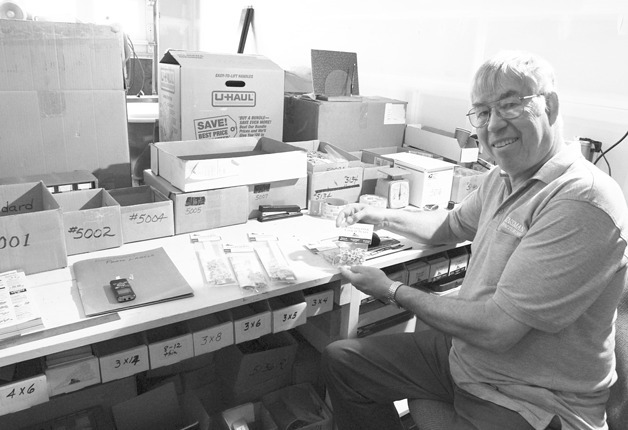“Are you tired of your coaches having that dark, empty look?”
That’s the question Mark Malmkar presents to those visiting his website, PalaceCarCo.com
It probably won’t mean much unless you’re a model railroader who has suffered with the empty interiors supplied by some of the dozen makers of model passenger cars.
“Empty cars are not realistic!” exclaimed Malmkar, 65, a Nebraska native who’s recently moved to Oak Harbor with his wife, to be closer to their children.
A model railroader since the age of 10, he said he’s pretty typical in his demand for detail.
“You need seats. You need berths in the sleepers. You need refrigerators and tables in the dining cars.”
Why are the interiors frequently left out?
“I’ve got some theories about that, but it would take an hour of discussing the various manufacturers to explain them,” he said.
Malmkar is among a few sole proprietorships turning out parts commercially for model railroaders. Three-D printing doesn’t deliver fine enough details, so injection molding of styrene plastic, sometimes combined with laser etching, is the only way to go.
He operates his own huge, heavy milling machines and surface grinders to craft pieces and make molds, farming out the actual molding.
Though his products are tiny — four passenger seats would fit on top of a quarter — they are highly detailed.
There’s even a minuscule antimacassar (linen napkin) molded into each seat, which some modelers paint white or cover with actual paper.
Malmkar’s own layout, still in storage back in Nebraska pending close of escrow on a new Oak Harbor house, models a mid-1950s passenger line passing through the Colorado mountains.
Covering two levels and stretching 14 feet wide by 40 feet long, it features some of his 300 freight cars, 200 passenger cars and 25 locomotives.
Compared to fellow hobbyists, he said, “I’m about a 6 or 7 out of 10. I don’t have the most stuff, but what I have is pretty well detailed.”
He founded his business, called Plainsman Manufacturing, in 1999 after getting frustrated trying to hand-build the interior of two passenger cars.
He bought sample cars from all the manufacturers and drew up plans for varied interiors for each.
In addition to seats — offered in HO, N and S scales — he makes kits to fit out a large variety of passenger coaches, including dining cars, observation cars and sleeping cars.
The kits, many with several layout options, sell for up to $70 and are available on his website, at shows and through distributor William K. Walthers Inc.
All pieces are unpainted, so that the modeler can obsess over the proper color choices.
Malmkar is a self-described “farm boy” with a degree in agronomy and 14 years of teaching vocational agriculture.
After quitting teaching, he worked in manufacturing and after a time went into mold-making.
He has sold more than 500,000 tiny seats to hobbyists in Australia, Brazil, Canada, Denmark, England, France, Germany, Japan, Mexico, New Zealand and the U.S. But he doesn’t make a profit, he said.
Some of the passenger-car makers have now started including interiors, cutting into his business.
The market for his products is small, and selling through his distributor cuts his profits.
Still, Malmkar said he has plans for more than 20 new products, and once he gets established in his new house, he plans to forge ahead with them.
“I won’t get rich and I don’t care,” he said. “I just enjoy doing this.”



